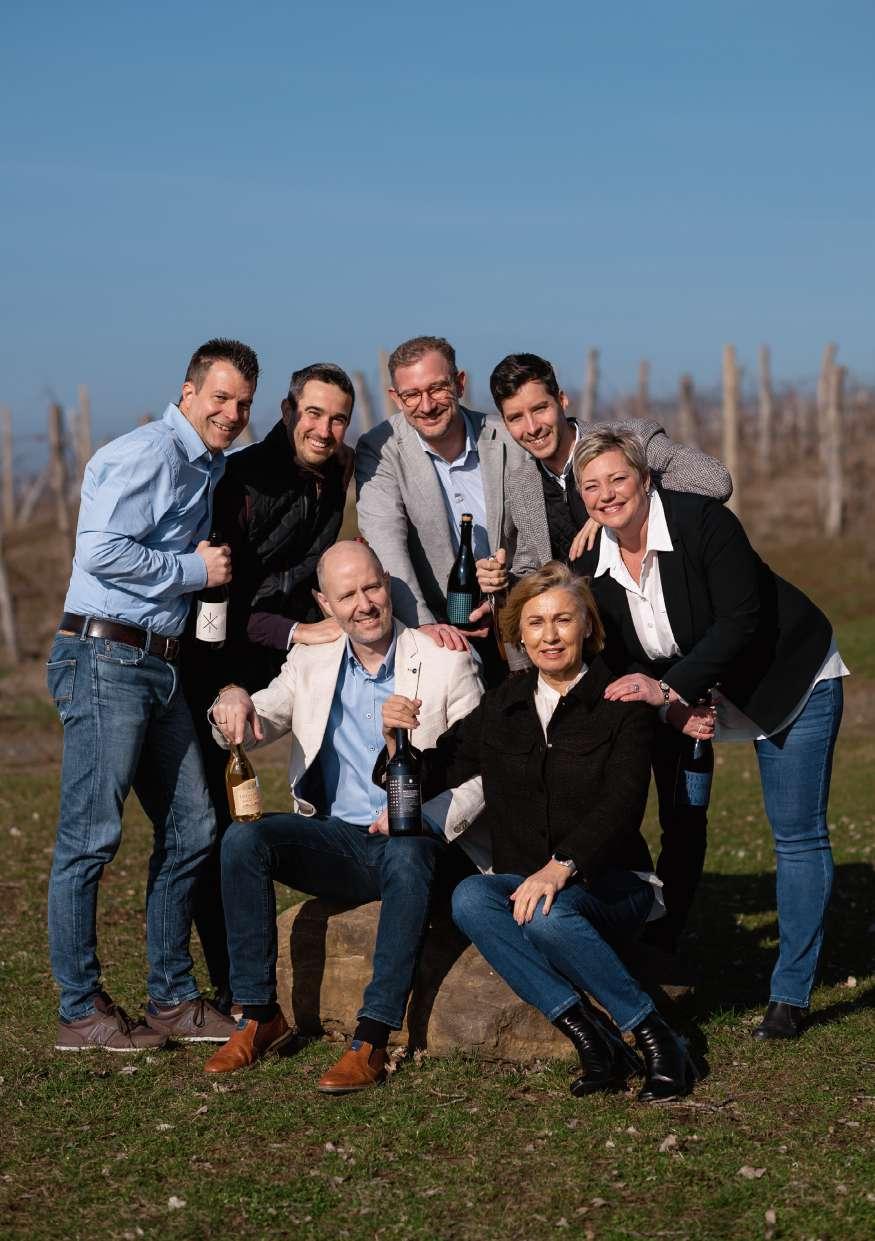 Fine Wines Association OF HUNGARY
Fine Wines Association OF HUNGARY



 Fine Wines Association OF HUNGARY
Fine Wines Association OF HUNGARY


It’s not just aszú that makes Tokaj unique. As the world’s first closed wine region since the 18th century, no history of wine can be complete without acknowledging Tokaj’s role and significance. In 1737 Emperor Charles III’s decree listed the settlements that were granted the right to use the name Tokaj for their wines made from grapes harvested within their administrative areas. Thereby it became illegal to bring grapes, must or wine from other territories into these demarcated zones and so the origin of Tokaj wines became protected. The outstanding universal value of Tokaj was acknowledged by UNESCO in 2002 when it was listed as World Heritage site under the name ’TokajHegyalja wine region historic cultural landscape’. The aim of the legal protection is to preserve the condition of the built structures and the natural environment. Today it is still a closed wine region with exclusively white wine production and winemakers in the 27 settlements can cultivate no more than six varieties. The following varieties are allowed: furmint, hárslevelű, sárgamuskotály, zéta, kövérszőlő and kabar.
What makes the Szekszárd wine district special is the complex system of interconnected valleys and hills with varied microclimates. The Szekszárd region stretches over almost 150 km2 in an area that was once the seabed of the Pannonian Sea. The sand and sediment left by the sea is now covered by loess, the wine region’s main soil type interspersed by limestone and red clay. The vine growing areas are organically connected to the city and the vineyards are linked by narrow gullies cut into the loess by running water (locally known as „szurdik”). The dense network of hills and valleys which create unique zones in terms of microclimate and exposure together create a moderate-Mediterranean climate with frost-free springs which coupled with loess soils enables winemakers to craft expressive, inviting, fruity wines. It is common for local wineries to cultivate several plots, often separated by quite a distance, which allows winemakers to fine-tune the balance of their blends with grapes coming from warmer or cooler areas and of differing soils.
Eger as a wine district is characterized by a rich diversity of varieties. There is no single red or white grape variety that could be considered dominant either in terms of acreage or production volume. As a consequence blending has been a long-standing tradition in the region. The blend that stands head and shoulders above all others in terms of importance is of course egri bikavér with a 150 year history. Its white counterpart egri csillag is much younger with just a decade since its inception but it has still managed to carve out a significant position in the domestic market. Eger winemakers believe that this is the wine category that offers the best chance to express the potential of the region. Strict regulations control the varieties allowed in the blends and their relative proportions, the viticultural practices and the winemaking technology, ageing requirements and the quality levels. So egri csillag is not just a vehicle to showcase the region’s diversity but also a guarantee of quality for customers.
Often called the „vineyard of Budapest”, the Etyek-Buda wine district is characterized by a cooler than average climate in Hungary, calcareous soils and zesty wines. It is because of these features that Etyek is often compared to Burgundy or Champagne in France. Actually there is even more substance to these comparisons as József Törley recognized as early as 1882 how favourable the local conditions were for producing sparkling wines and soon Etyek sparkling wines achieved wide-scale recognition. Today most local wineries focus on producing still wines, and in recent years Etyek was responsible for some of the best Hungarian chardonnays, pinot noirs and sauvignon blancs. However it is their intention to return to the region’s sparkling wine heritage and to revive it as a premium product with a quality level and requirements which go beyond the present day regulations. The major varieties of the wine region, chardonnay and pinot noir will have important roles to play in this project, but other local and international varieties should also contribute to creating a special and recognizable style in Etyek.
Although many people head to the Balaton due to its summer relaxation and water recreation opportunities, the area around Central Europe’s largest lake offers plenty of active and culinary programmes. Whether it’s a hiking excursion on the volcanic buttes of the Balaton Highlands or exploring the wine region itself, you can find unique wines here that are excellent conveyors of the soil’s characteristics. The Balaton’s environment is particularly favourable for viticulture. The lake provides a lot of reflective sunlight, good humidity and cooler summers, thus creating a unique mesoclimate. There are geologically diverse layers of volcanic and basaltic limestone detritus as well as loess, brown and red forest soil, dolomite and pannonian sand - Paloznak is famous for the Permian red sandstone. Olaszrizling is the wine region’s most widespread variety, which beautifully reflects the characteristics of the terroir. The BalatonfüredCsopak Wine District, where Paloznak is located, produces particularly elegant wines with fine acidity.
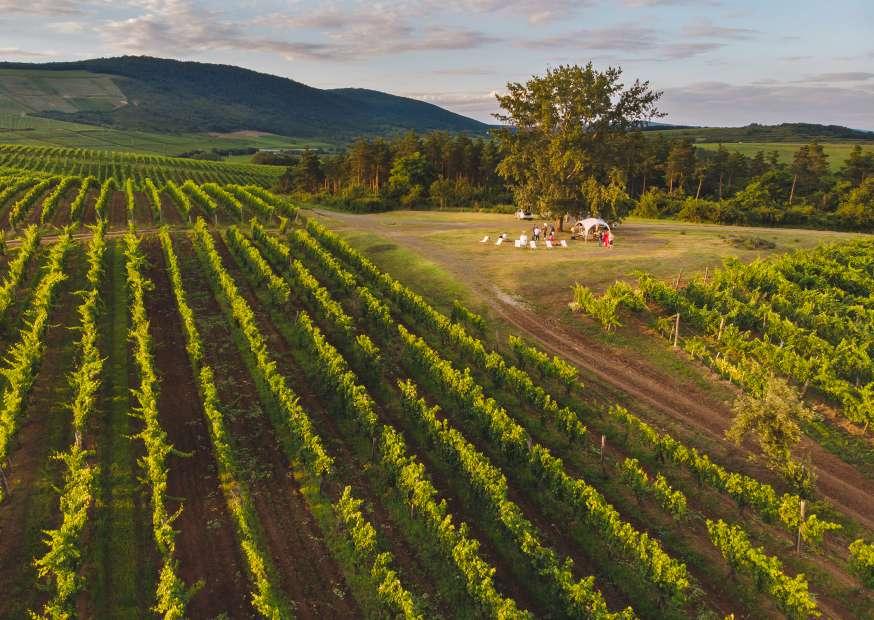

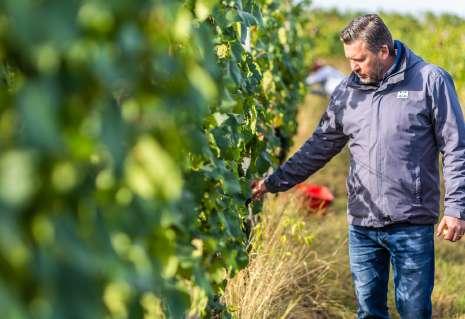
Fine Wines Association was established with the goal of educating wine lovers, wine professionals and visiting tourists about the merits of Central and Eastern European wines and in particular Hungarian wines. Hungary is a country with a remarkable history in viticulture and wine production but when it comes to international markets it is still only an up-and-coming player. The rich diversity of local varieties and terroirs has not been explored by the rest of the world yet.
Consistency, high quality and individual character – these are the key words to describe the work of the members of the FINE WINES ASSOCIATION in past decades and this is what the words “Fine Wines” in the name refer to. They believe that working together and helping one another, selflessly sharing expertise and professional connections is the best way to make their wines and wine regions appreciated abroad. This spirit of cooperation is expressed by the word „Association”.


Representing six different wine districts the members of FWA are influential and important wineries. Together they provide a diverse, comprehensive and easy to grasp cross-section of quality wine production in Hungary. Each winery represents the typical wine style of its corresponding wine region and together they cover a wide range of Hungarian wines in one comprehensive assortment. Their shared values are based on being small or medium sized estates, their family centered attitude, their respect for local traditions of viticulture and winemaking, in harmony with a relentless spirit of innovation.
By acquainting yourself with the wines of FWA members you can find out about local varieties, traditional blends, diverse styles and the specific characters of Hungarian wine regions. You can explore a varied and extensive range of top quality region-specific wines which satisfy the tastes of consumers in every respect. Following environmentally conscious winemaking practices is also a common goal, with some choosing to work organically.
Sopron Wine District
Etyek-Buda Wine District
Szekszárd Wine District
Eger Wine District
Tokaj Wine District
Balatonfüred-Csopak Wine District
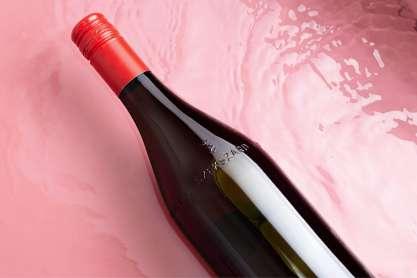
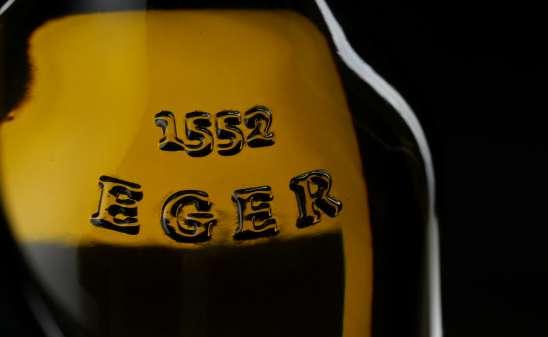
Upper Pannon
Wine Region:
ETYEK-BUDA & SOPRON
Etyeki Kúria Winery
Tokaj Wine Region:
TOKAJ
Tokaj-Hétszőlő Organic Vineyards
Upper Hungary
Wine Region:
EGER
Tóth Ferenc Winery
Pannon Wine Region:
SZEKSZÁRD
Vida Péter Szekszárd
Balaton Wine Region:
BALATONFÜRED-CSOPAK
Homola - Paloznak

Building communities and striving for cooperation are highly esteemed values shared by all FWA members. The realization that led to the foundation of FWA was that by joining forces they can inform consumers more efficiently about Hungarian geographical indications, the system of controlled designations of origins, wine regions and their typical wines.
The purpose of the Association is to provide consumers with sufficient information through educating them about the controlled designations of origin (Etyek-Buda OEM, Sopron/Ödenburg OEM, Szekszárd OEM, Tokaj OEM, Eger OEM, BalatonfüredCsopak OEM) which in turn enables them to make informed choices and find the products which suit their expectations best. They want to present the characteristics and the diversity of Hungarian wine regions, winemaking traditions and wine culture in a clear and easy to understand way and by doing so provide wine consumers with practical guidance in the intricacies of designations of origin, wine regions and wines.
A further goal is to inform customers about responsible wine consumption and the risks associated with excessive alcohol intake in a joint effort with the „Wine in Moderation” scheme which advocates sustainable wine culture.



I believe, that we are stronger together. Together we are able to emphasize the great terroirs of Hungary. Together we create real value and together we set an example of cooperation.
Koppány Nádassy
I believe that it is possible to do things this way. To act in the spirit of shared values, to cooperate over the boundaries of wine regions and last but not least to work in the company of great people. Together.
Péter Vida
Our aim is to constantly improve; we are full of ideas and creativity, which I believe, will bring many surprises to our clients in the coming years.
Zsombor Gál


I believe, that we are stronger together. Together we are able to emphasize the great terroirs of Hungary. Together we create real value and together we set an example of cooperation.
Koppány Nádassy
In today’s world in almost all fields shared thinking and action has come to the fore and the significance of team work has increased. It is our firm belief that four is more than one, provided they can cooperate in the right way and find common goals beyond their individual interests. This is what we have achieved.
Katalin Tóth
Geographical location:
Main soil:
Climate:
Area under vine:
Most popular varieties:
The wine district stretches along the northern shore of Lake Balaton, geographically, it is part of the Balaton Highlands.
Its soils are varied. Forest soils overlay crystalline shale, Permian red sandstone and Quaternary loess, while rendzina soils formed on Triassic limestone, dolomite and marl.
Temperate, continental climate. Its favourable slope angle and fragmented topography create extremely favourable microclimates.
2143 ha
Olaszrizling, Kékfrankos
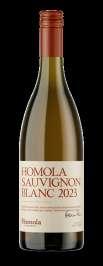
Balaton PGI
A fresh, pure Sauvignon Blanc, naturally made. Its style is somewhere between the Sauvignons of the Loire and the New World. The grapes come from loess soil from the southern shore of the Lake, the only Homola wine outside of the Wine District. After hand harvesting, the grapes were immediatelly processed, followed by fermentation in low temperature in stainless steel tanks than a 5-month-long maturation in also stainless steel. At the beginning of ageing, the wine is kept on a fine broom.

Balatonfüred-Csopak PDO
Cuvée St is a picture-perfect Balaton wine. Crisp, elegant, immersive, carries the flavours of the summer at the Lake. The varieties in this wine are Tramini, Szürkebarát and Sárgamuskotály. The grapes come from different parts of the Paloznak area, the soils are mainly composed of red sandstone and marl. From 2023, the vineyards are in the process of organic conversion; the grapes are harvested by hand. The winemaking is natural and modern, what you get from the bottle is nothing but the pure juice of the terroir.
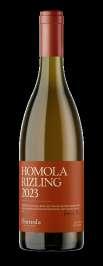
Balatonfüred-Csopak PDO
One of the winery’s most important wines is an elegant blend of Olaszrizling and Riesling. The fruits come from the best parcels of Paloznak and surrounding area, the soil is mostly Permian red sandstone and marl, typical mixture of the region’s colourful grounds. 15% of the base wine is fermented and aged in 500l Hungarian oak, 85% in stainless steel. Only natural yeast of the grapes are used.
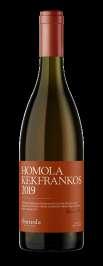
Balatonfüred-Csopak PDO
Balatonfüred-Csopak wine region is mostly well-known for its white wines. Although reds are quite characteristic here, the most important black grape variety is Kékfrankos as in the whole country. NorthernBalaton’s Kékfrankos are always very elegant, ripe but not tannic driven red wines and Homola’s red wine philosophy fits totally in this style. The grapes come from Paloznak, Tihany and Alsóörs. After the manual harvest, the healthy grapes are immediately processed, destemmed and gently pressed. 3-4 weeks of fermentation in open vats, 24 months of ageing in 500 l Hungarian oak barrels. Unfiltered, unrefined.

This unfiltered Kékfrankos is the fruit of a 30-year-old vineyard in Tihany Peninsula on the shore of Lake Balaton. A real volcanic wine as here the soils are mainly composed of bazaltic tuff. The wine was fermented spontaneously in open-vats and aged in large barrels for 24 months. The result is handcrafted and charming medium body red wine with an elegant acidity and a long finish.

Established in:
Vineyards:
Production:
Web:
E-mail:
2009
5 hectares in Paloznak, Alsóörs
80.000 bottles/year homolapinceszet.hu/en sales@homolapinceszet.hu
After the foundation of the winery in 2009, Homola-Paloznak still aims to bring out the best of the exciting terroir of the microregion of Csopak and is on the pursuit to create something that makes the Balaton a better place. The winery is situated in Paloznak and cultivates on 15 hectares. In order to respect the region’s traditions, the primary varieties are Olaszrizling and Kékfrankos, but they also pay special attention to Riesling, Sauvignon Blanc and Syrah, mainly focusing on the local market. Four exciting vineyards provide the basis for the production: Sáfránkert, Hajnóczy and Gölye-Mál in the region of Paloznak, on Permian red sandstone, limestone, and marl. Lapi in Tihany Peninsula, where – due to the regions volcanic past – the soil is composed of basaltic tuff. All Homola’s vineyards go through organic transition since 2023 and this natural approach is also present in the cellar: use of wild yeasts, no or very smooth clarification and filtration. The use of sulphites is the lowest possible to set a balance between fresh, crisp, yet naturally aged wines.
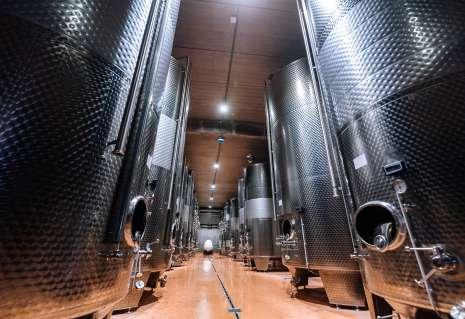
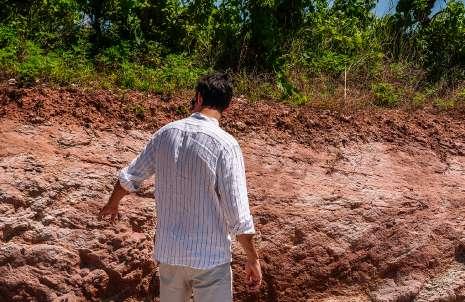
Csopak microregion –home of Olaszrizling
The subdistrict of Csopak - also includes Paloznak - focuses on the perfection of Olaszrizling, an old and indigenous Carpathian variety that has no similarity or connection with classic Riesling. The geological structure of the area shows a very complex picture. The Permian sandstone is of a typical red, terrestrial origin and produces red soils rich in silica and iron oxide. Above this, we find various carbonaceous rocks, whose lime-rich marl gives the loamy soil a white colour. This calcareous soil is the reason for the distinctive acidity of the wines from Csopak. The colour combination of the red and white soil is an attractive landscape feature.
Two distinct wine styles dominate the area: Olaszrizling wines from the Balatonfüred region are full-bodied, fiery, and have a higher total extract content. Tasters with refined palates often describe these wines as having a mignonette flower note. Csopak Olaszrizling is also complex but more vibring. And even if we assume they have the same alcohol and acidity content, Csopak taste fresher and lighter. However, it is not the lightness of a wine produced from loamy-sandy soils, but the result of a crisp, lively acidity.
At Homola Paloznak, the goal is to be an important and active player in the public life of the Balaton region and Paloznak in particular. With one of the most beautiful views on the northern shore of Lake Balaton, a wine terrace awaits those who want to relax and enjoy quality time on a gentle hillside, among the rows of grapes. On the program: cultural events, wine tastings & evenings,
picnic baskets and DJ in the vineyard every Saturday in the summer.
Paloznaki Jazzpiknik is a three-day festival of jazz, funk, pop, soul, and an unmistakable picnic experience realized every August with the winery’s cooperation. Countless concerts and shared memories spans generations at Balaton’s most prestigious boutique festival.
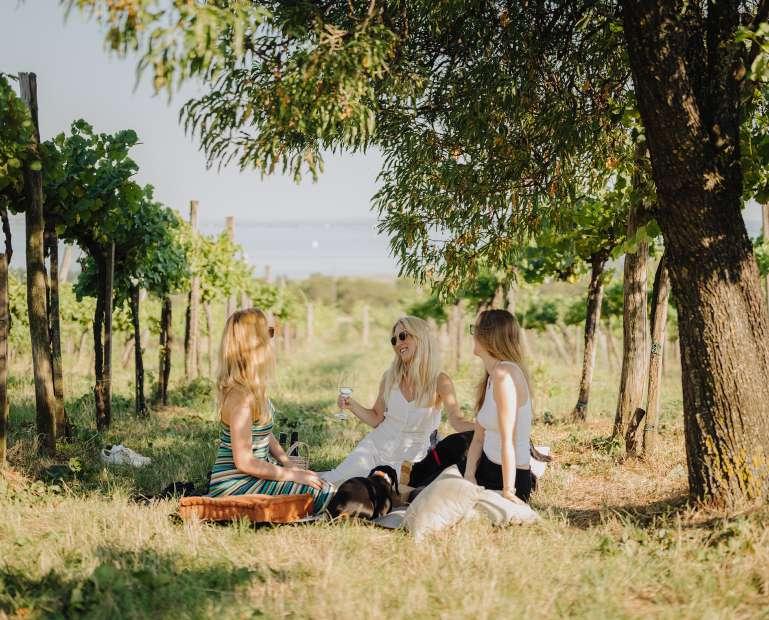


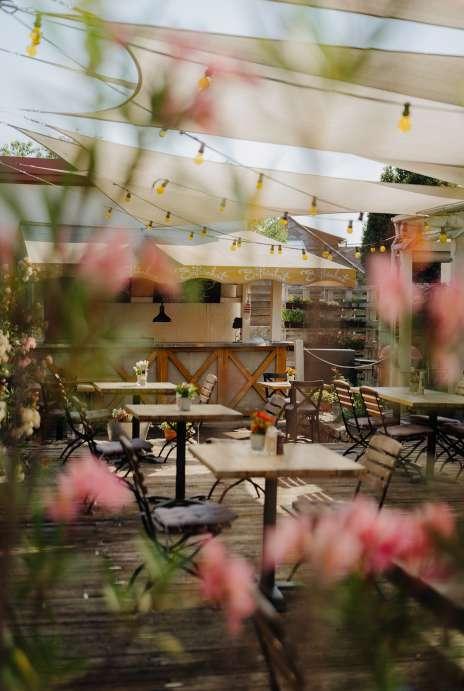

Geographical location:
Main soil:
Climate:
Area under vine:
Most popular varieties:
a part of the Upper Pannon wine region it is situated in Northern Transdanubia limestone
cold winters and moderately hot summers
1652 ha
sauvignon blanc, chardonnay, pinot noir

Etyek-Buda DOC
The cooler climate of the EtyekBuda wine district fits sauvignon blanc like a glove. Wines made here from this variety are distinguished by their zesty, vibrant acidity and stylistically speaking they occupy the middle ground between the classically restrained examples from the Loire and the more intense expressions from New Zealand. At Etyeki Kúria they have opted for low temperature fermentation and reductive technology to enhance the primary fruit character. A brief ageing on fine lees gives the wines extra textural complexity.

Etyek-Buda DOC
This classic international variety thrives in the calcium rich soils of the Etyek-Buda wine district. You can’t properly understand the Etyek terroir without getting to know its chardonnays, as they are one of the most successful wines of the region. Etyeki Kúria produces chardonnays in various styles. This wine was partly fermented in oak and partly in steel tanks. It’s a spicy and beguilingly complex wine.

Etyek-Buda DOC
Some people call Etyek-Buda the ’Hungarian Burgundy’, so it shouldn’t come as a surprise that pinot noir has found a second home here and has gained a steady foothold. Over its two decade history in the region this sensitive variety has attracted a strong following and developed a recognizable style that reflects the Etyek-Buda terroir. Etyeki Kúria’s Pinot Noirs are aged in Hungarian, Austrian and French oak barrels and the resulting wines are elegant, complex and multifaceted. They are the pride and joy of the winery.

Sopron DOC
Today the Sopron wine region is best known for its reds. The cool and windy climate coupled with soils rich in minerals produces vibrant wines with ripe fruit notes. Etyeki Kúria’s highly successful Merlot is a real crowd-pleaser, with velvety texture and a beautiful terroir expression. This oak-aged red shows excellent balance with a great ageing potential.

Sopron DOC
With more than half of its vineyards dedicated to this variety Sopron is the most important kékfrankos producing region, rightly considered the ’Homeland of Kékfrankos’. The grapes grown here produce wines of moderate tannins, zesty acidity, good balance and vibrant fruit. All the above is true for Etyeki Kúria’s Kékfrankos coupled with the added benefits deriving from proper ageing both in barrels and bottles. The resulting wine shows a cool elegance and can be cellared for many years to come.
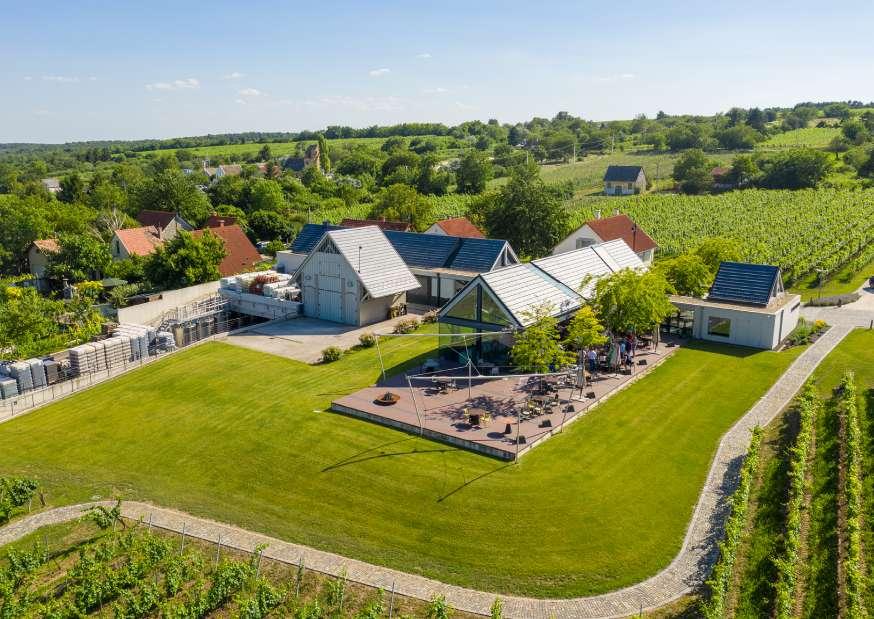
Established in:
Vineyards:
Production:
Web:
E-mail:
Etyek-Buda Wine District: 32 hectares & Sopron Wine District: 22 hectares
250.000 bottles/year
eu.etyekikuria.com
etyek@etyekikuria.com
We believe that the future is built on the past, striving to work in an innovative spirit while respecting traditions and learning from them. As an important milestone in our history, we were the first in the region to plant Pinot Noir vines to make red wine, previously only used to make sparkling wines. Working in two distinct locations, Etyek-Buda and Sopron, enables us to create an exciting assortment of wines, ranging from light, fruity sparkling wines, through characteristic, acidity-driven white wines, all the way to mature reds. The home of the sauvignon blanc, chardonnay and pinot noir trio is the Etyek-Buda wine district, located just 30 minutes from Budapest. In the Sopron vineyards, found in the northwestern corner of Hungary on the border with Austria, kékfrankos and merlot dominate.

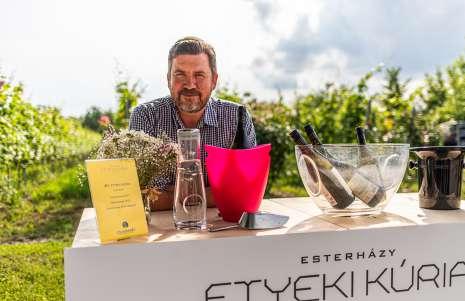
When we set about building the new HQ of our estate there was one thing we were sure of: the older buildings belonging to the winery must be preserved. This was one of the basic premises that the architect had to consider before making his plans for an up-to-date, state-of-the-art winery. Following our daily work in the vineyards and the cellar we spent seemingly endless sessions trying to align the architect’s concepts with those of the winemaker on what makes a winery’s facilities great.
However looking back it’s not the two year long preparation process that left the most vivid memories but the last two months of the construction works. What made it so memorable was the fact that the final stages coincided with the harvest. By then the construction has reached the ground floor but
this just meant bare walls all around. When the first bunches arrived to the cellar parts of the roof were still missing and some sections had no lightings installed. At the gates trucks loaded with grapes and trucks loaded with concrete were vying for entrance. The available power sources were insufficient to operate the crane and the press at the same time. In the two month long period of the harvest the steel fermentation tanks were moved sixteen times.
Eventually everything turned out fine; the wines of the vintage and the new facilities both exceeded our expectations. It was a challenging period but it was worth it. Since then whenever exhaustion seems to set in at harvest time we just have to remind ourselves what we went through earlier and suddenly the task ahead looks much less daunting.
Etyek is a northern, cool climate vineyard with calcareous soils. Both natural conditions and market demand seemed to favour white wine production. These were the conditions Etyeki Kúria had to consider when it started its operation. We had to build on international varieties well suited to the cooler climate like chardonnay and sauvignon blanc. The decision worked well, the quality of our bottlings was high and consistent from the beginning. For a winery taking its first steps in an almost completely forgotten wine region it was particularly important that these wines were quick to gain recognition and were well liked by domestic consumers.
With all this in mind it was a rather bold and risky move to plant pinot noir in the early 2000s with the ambition of producing red wines in Etyek. At that time pinot noir was used to make white sparkling wines in the region. At Etyeki Kúria the plans for red wine production started to take shape in the late 1990s. Planting began in 2001 using French and German clones suitable for red wine production. Our first Pinot Noir was bottled in 2003.
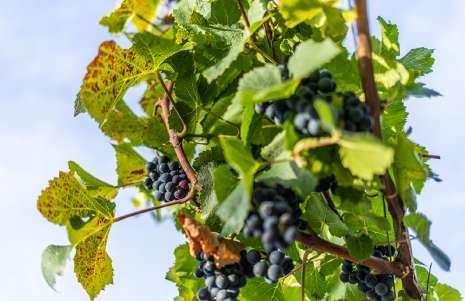

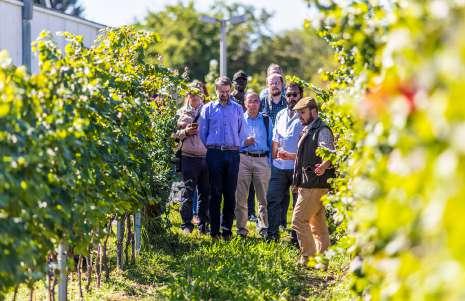
Since then Pinot Noir has become one of our winery’s standard bearers. With all the recognitions the wine has garnered over the years what once seemed a risky move has been completely justified. Etyeki Kúria’s Pinot Noir is widely seen as a benchmark among Hungarian representatives of this variety. However the achievement we are the most proud of is that the quality of our wines convinced several local winemakers to follow in our footsteps and today pinot noir vinified as a red wine is one of the leading wine styles in Etyek–Buda.

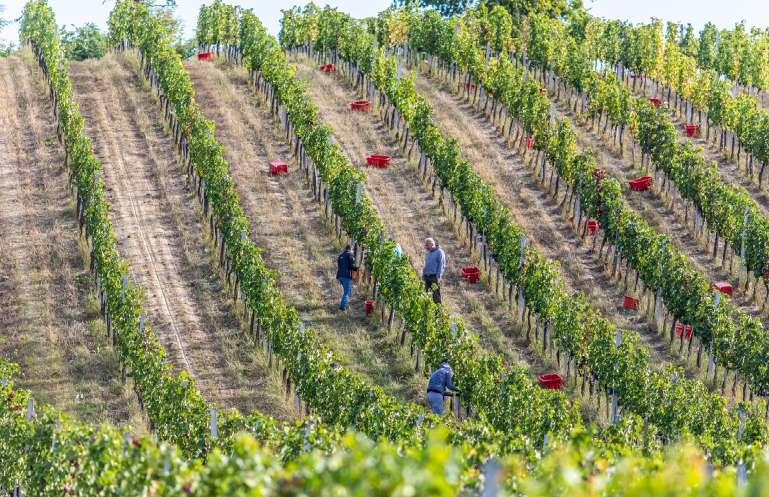
The tradition of viticulture and winemaking in Etyek goes back more than a millennium. For many centuries the region played a vital role in supplying the wine merchants and the restaurants of the nearby capital, Budapest. But like in most other European wine regions the ravages of Phylloxera dealt a devastating blow to the industry. At that point all signs suggested that the fate of viticulture in Etyek had been sealed.
The history of modern winemaking in Hungary began in the 1990s. It is perhaps more accurate to call it a restart or revival. This is the time when the Etyek–Buda vineyards were officially recognized as a wine district. It was at this point that an important figure in the history of Hungarian winemaking started his tenure in the region. Tibor
Báthori was the first to introduce both gentle pressing by pneumatic presses and temperature controlled fermentation. These technologies play a vital role in producing expressive wines with pronounced fruit flavours.
Many of today’s leading Hungarian wineries started their careers during this decade. We are proud of the fact that Etyeki Kúria was one of the first in line to reacquaint the wider public with the wines of Etyek in the 1990s. We find it particularly inspiring that the winery started its operation in the very same building where Tibor Báthori worked. However it is not only his historical achievements that inspire us, we are also driven by a similar desire to innovate and to find new ways to develop.
Geographical location:
Main soil:
Climate:
Area under vine:
Most popular varieties:
Tokaj wine region, Northeast Hungary volcanic subsoil, loess cover cold winters, moderately hot summers 5700 ha furmint, hárslevelű, sárgamuskotály
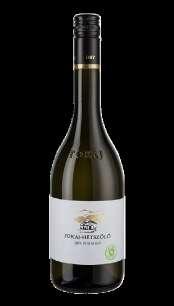
Tokaj DOC
Furmint has been used to make wines in Tokaj for many centuries, so it is justifiably regarded as an indigenous variety. To show its best it needs soils rich in minerals, and when its demands are met the wines reflect their terroirs with great precision. It is since 2009 that Tokaj-Hétszőlő has decided to place much more emphasis on making dry wines. With our Estate Furmint the aim is to preserve the fruit aromas while producing a lithe but nonetheless substantial wine.
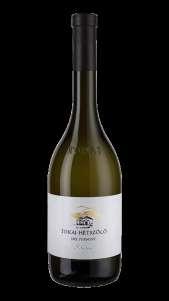
Tokaj DOC
Furmint is the most important variety in the Tokaj wine region. An aromatically neutral variety it is capable of expressing its terroir with great precision. The rather vibrant acidity typical of the variety contributes to the elegance and longevity of the wines. In the case of Furmint Selection the juice of carefully selected berries is fermented in wooden vats and aged on its lees. It is a wine of intense aromas, good weight, great persistence and remarkable ageing potential.

The Tokaj Wine Region Historic Cultural Landscape is part of the UNESCO World Heritage

Tokaj DOC
Furmint is a variety famed for its lively acidity and its ability to accumulate sugar. Shriveled berries naturally yield themselves to sweet wine making and this is what established the legendary status Tokaj has enjoyed for many centuries. With a well chosen dish the rich, honey and dried fruit aromas of late harvest sweet wines make for an unforgettable culinary experience. At Tokaj-Hétszőlő the Late Harvest is fermented in steel tanks to preserve the seductive fruit flavours and to achieve supple elegance.

Tokaj DOC
Szamorodni is a wine category unique to Tokaj. The name is of Polish origin and it means ’as it comes’. The name refers to the fact that unlike with Aszús where shriveled berries are picked separately, with Szamorodnis the bunches containing both healthy and noble rot infected berries are harvested at one go. Following fermentation the wines are aged in barrels. Tokaj-Hétszőlő’s Sweet Szamorodni is a modern wine that is vibrant and refreshing, displaying opulent dried fruit aromas and an excellent balance between acidity and residual sugar.
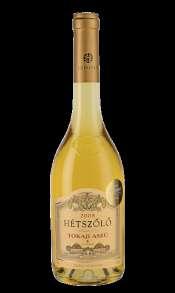
Tokaj DOC
The unique Tokaj microclimate, the Botrytis cinerea fungus (a.k.a. „noble rot”) and centuries of experience are the essential ingredients for the creation of the ultimate wine wonder: Tokaj Aszú. Following the painstaking and prolonged manual harvest when the dessicated berries are picked one by one, the aszú berries are soaked in wine, then pressed and according to the regulations aged in barrels and finally in bottle. Tokaj-Hétszőlő’s Aszú is characterized by an extraordinary range of aromas, great poise and complexity.
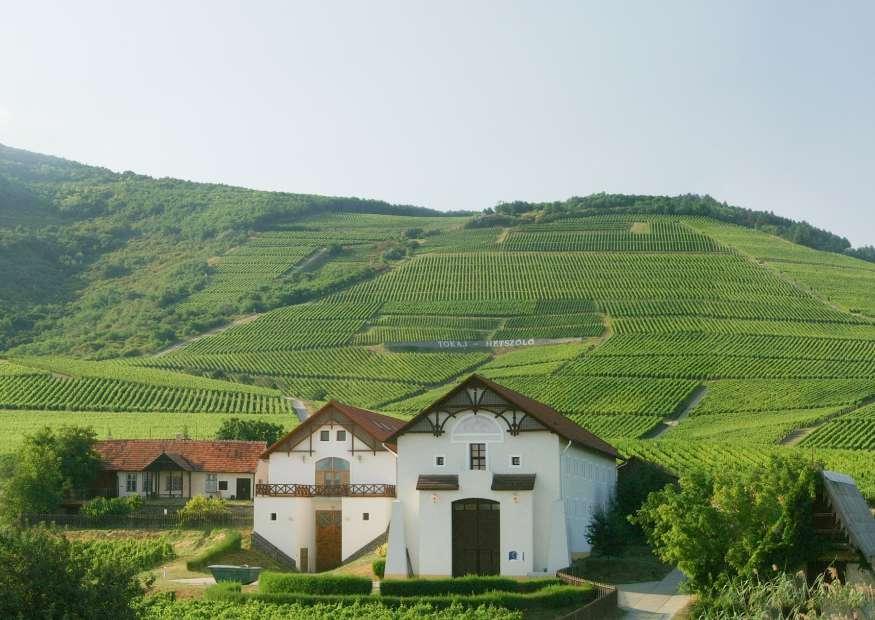
Established in:
Vineyards:
Production:
Web:
E-mail:
1502 / 1991
Tokaj Wine District: 55 hectares 150.000 bottles/year
www.tokajhetszolo.com/en
tokaj@hetszolo.hu
Tokaj-Hétszőlő’s first class, organic vineyards are situated on the southern slopes of Mount Tokaj. Hétszőlő dates back to 1502. It used to belong to royal families, including the emperors of the AustroHungarian Monarchy. „Hétszőlő” means the 7 best parcels of vineyards on Mount Tokaj. Hétszőlő uses only its own handpicked grapes which are treated in the most natural way. The historical Rákóczi Cellar is owned by Hétszőlő Winery. It is situated in the heart of Tokaj, right next to the church on the main square of the town.
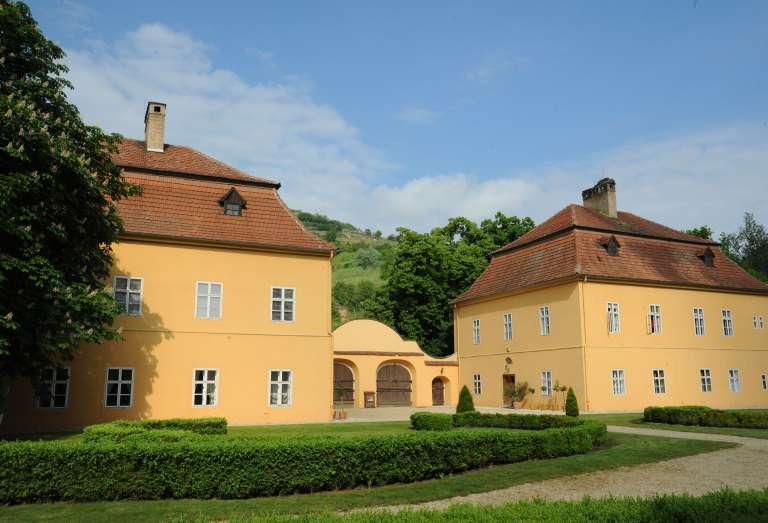
The mystery of Aszú
One of the things that makes Aszús so special is the fact that even winemakers working on them all year round can never know what to expect. TokajHétszőlő’s Chief Winemaker Gergely Makai claims that with every vintage he is constantly reminded that in the vineyards where Aszús are about to be born unpredictable events, bordering on the miraculous take place.
“During harvest you go out to check the vines and you find no signs of aszú berries being formed. And then barely a week later the bunches are full of shriveled and Botrytis affected berries.
Science has come up with explanations for many aspects of the conditions conducive to the formation of aszú berries. We know what terroir characteristics and varieties are needed. We also know that wet periods need to be followed by a drier spell.
However there is no way to predict with any certainty when aszú berries begin to develop. In some years they don’t develop at all. Harvest is a nerve-racking period for winemakers all over the world, however, in Tokaj there is an extra element that adds to your headaches: the anxious wait for the emergence of aszú berries.
Being at the mercy of nature is something that connects us with the generations working in Tokaj before us. It takes us back to five centuries ago and we should feel grateful for having this reminder that links our present with the past. The first document with reference to Aszú dates from 1571 and it specifically mentions the Hétszőlő vineyard which is not only the name of our winery today, but also our most important vineyard and the location where the winery was built.”
Modern Hungarian winemaking began in the 1990s. TokajHétszőlő founded in 1502 was among the first wineries in Hungary which following the collapse of communism have reembraced their historical heritage. In hindsight it is clear that there was much more to this new beginning than just being one of the first ones.
What makes the vineyards which form a contiguous holding surrounding the central building of the winery so precious is that it was spared from the heavy use of chemicals that was so widespread in the second half of the 20th century and therefore when the winery was reestablished it was easy to commit ourselves to eco-friendly farming. It has to be noted that at the time sustainable agriculture and the protection of the soil’s microbiome was far from being a major concern in Hungary or in Europe.
2009 was the year when we took the next major step. We were among the first wineries in Tokaj to decide to make our farming practices conform to the requirements for organic certification. This meant that we had to guarantee that all the processes applied from viticulture to bottling our wines were eco-friendly.

At the time we were troubled by doubts and haunted by fears. However the past decade has clearly demonstrated that our two vineyards, Hétszőlő and Nagyszőlő, were justifiably classified as first growths centuries ago. The conditions provided by these plots enable us to reach
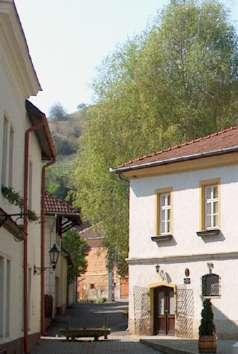
consistently high quality both for our sweet wines, which require wet weather in autumn which in turn poses a serious threat to the vines’ health, and also for dry wines, a category whose rise has totally transformed the wine scene in Tokaj.
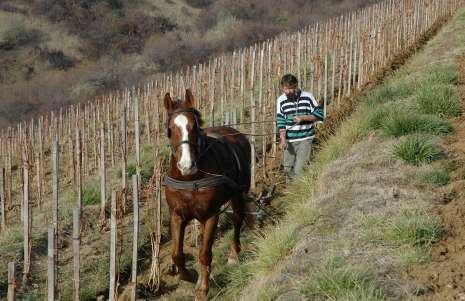
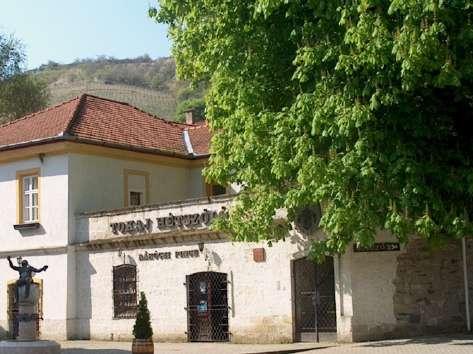
For centuries the name of Tokaj was synonymous with sweet wines. And though Tokaji Aszú is still the crowning glory of wines produced in the region, the „dry revolution” of recent years has opened a new chapter in the history of Tokaj.
It was two young professionals who were mainly responsible for the rise to prominence of dry wines at Tokaj-Hétszőlő. Gergely Makai started out as a winemaker and today he is the Managing Director. Tamás Oroszlán started out as a tastings coordinator and today he is our Sales and Marketing Director. Together they combine impressive viticultural and winemaking expertise with an in-depth understanding of the ins and outs of the global wine market.
The beginnings were rather inauspicious as the first vintage, 2010 was a most challenging year with record-breaking amounts of rain and low temperatures. It took a lot of dedication and attention to details in the vineyards and then a careful selection of the right parcels to come up with the grapes for our first Furmint Selection. Thankfully, the wine was well-received. 2011 proved to be an excellent vintage. When the estate wine and the Furmint Selection was made we kept in mind the lessons learnt during the previous year. The next vintages were mainly about fine-tuning oak management.
It was a difficult challenge to find out not only which vineyards yield the best grapes for dry wines but actually which sections within a specific vineyard. In Tokaj soil composition may vary widely even within the same vineyard. Eventually it was our highest lying area, Kis Garai which proved to be the best suited. This is a vineyard where the loess topsoil has almost completely eroded and roots have to cut directly into volcanic subsoil. Grapes grown in this spot produce wines with a strong mineral character and this is a style that is more and more in demand not just in Hungary but all over the world.
Geographical location:
Main soil:
Climate:
Area under vine:
Most popular varieties:
part of the Pannonian wine region, it is situated in the southern part of Transdanubia
loess
mildly cold winters, hot summers
2600 ha
kékfrankos, kadarka

Szekszárd DOC
Beyond growing indigenous varieties the wine region has a long-standing tradition of cultivating international varieties. They work well in all the typical blends of the region: rosés, sillers, light and weightier reds. In Tündértánc the juicy and round fruit of merlot is lifted by the zesty character of kékfrankos. This is an inviting, charming and elegant blend, very much like the dance of fairies.

Szekszárd DOC
Kadarka has been grown in Hungary since the 15th century and by now it is generally considered a local variety. Today one in every four kadarka vines are grown in Szekszárd. Local winemakers have always had a special affinity with the variety as it is demonstrated by the fact that all the really old plantations in Szekszárd are kadarkas. The grapes for Vida Bonsai come from centenarian vines. The spicy character, the liveliness, the elegance and the refreshing vivacity is sure to enchant any wine lover.

Szekszárd DOC
A variety hailing from the old Dalmatian-Hungarian-Austrian territories kékfrankos has a great ability to convey terroir differences and it is able to cope with the changed conditions caused by global warming and produce top quality wines. One of the leading varieties of the Szekszárd wine district single-vineyard and premium kékfrankoses are starting to receive the attention they deserve. Vida Hidaspetre is a single-vineyard wine showing balance and poise with refreshing tannins.

Szekszárd DOC
Bikavér is the region’s traditional and emblematic blend, a wine that has always been held in high esteem throughout its long history. One half is made up of kékfrankos and kadarka the rest is a carefully proportioned mix of the permitted international varieties. The blend is then aged in barrels for at least a year. Vida Bikavér displays marked spiciness, faultless balance and elegance as it befits a true Szekszárd wine.

Szekszárd DOC
The main soil type in Szekszárd is loess. Wines made from grapes grown on loess soils are typically expressive with fruity-floral aromas, round acidity and tannins, and there is no need for extended cellaring even with the more substantial wines, they are ready to drink at a relatively young age. Vida Lösz is an elegant and charming wine, a true reflection of the terroir of Szekszárd’s valleys.
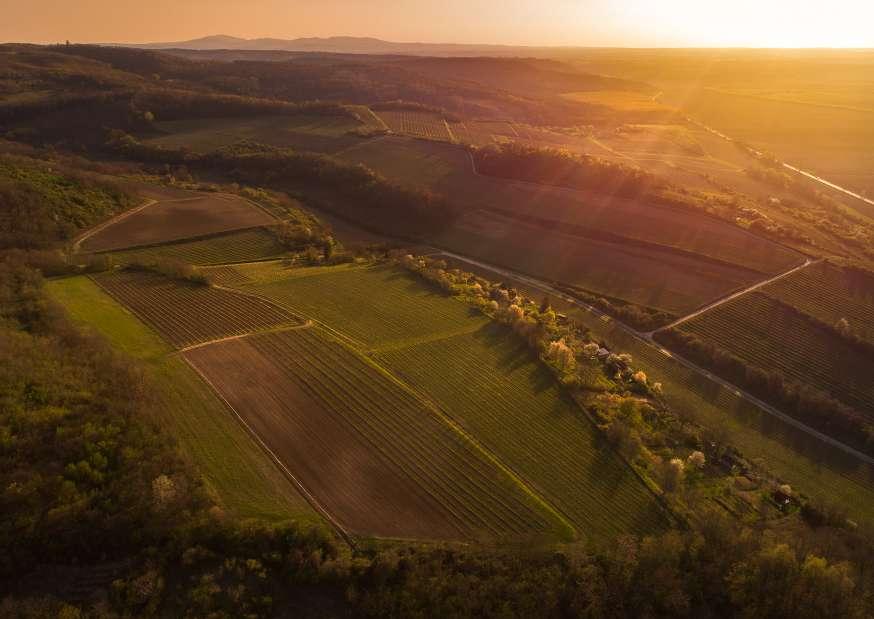
Established in:
Vineyards:
Production:
Web:
E-mail:
1989
Szekszárd Wine District: 23 hectares
120.000 bottles/year
www.vidaborbirtok.hu/en
info@vidaborbirtok.hu
In 2011 Péter Vida received the prestigious “Winemaker of the Year” award. The following years important long-term decisions were made by the family and the vineyards were replanted in accordance with the new strategy. After a three decade wait they are at last in the possession of vineyards which can express the true Szekszárd terroir. “Our goal is to promote the idea that the genuine Szekszárd wines are the ones which are elegant and welcoming”, says Péter Vida. The focus is on Kékfrankos, Kadarka and Szekszárd Bikavér; the Vidas believe that these are the wines which best express the unique character of the region. Producing top quality grapes is their main priority: “Vines should enjoy ideal conditions. We are doing our best to achieve this and we treat them in the most natural way”.
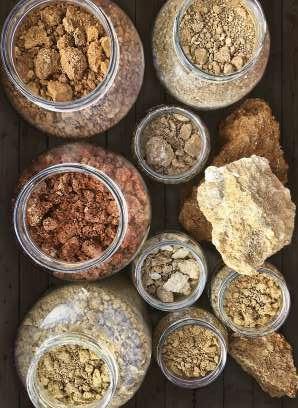
The founder of the winery, Péter Vida – winner of the prestigious award, “Winemaker of the Year” in 2011 – is one of the leading figures of the Szekszárd wine district today. However his ascent to the top wasn’t a walk in the park. Traditionally almost all families in Szekszárd owned some vineyards and made some wine but they rarely produced wines beyond the needs of the family.
“I was a secondary school student when my family bought a plot of about 2000 m2 in Bakta, where, as the saying went, it was impossible to come into the possession of land, unless you inherited it. Historically, it was the most highly regarded vineyard in Szekszárd but with the passing of time the city swallowed it and housing estates took over from the vines. Today, we are the only family left with operating vineyards in Bakta.

I was the one in the family who studied enology, therefore it was my responsibility, together with my siblings, to look after the vines. I was curious to see what others thought of the work we did, so I decided to enter our Kadarka in a local wine competition. The wine was registered under the name of my father and I kept the whole business in secret.
On a Sunday morning my father was reading his newspaper and there it was in bold letters that the number one wine at the local competition was the Kadarka of Sándor Vida. My father was a really strict person, but at that moment I saw tears of joy in his eyes. He hugged me and said: “You will see, one day the Lord will pay you back”. His reaction and remarks confirmed my belief that making wines is a rewarding career.”
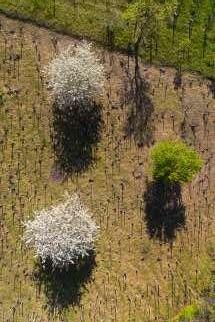
As a secondary school student Péter Vida studied viticulture and enology. The many great teachers he met there had a strong infulence on his career.
“I remember one of my teachers began his viticulture lesson by holding up some pruning shears in front of the class and then asked “What am I holding in my hands?”. “Pruning shears, Mr. Teacher”, the class answered. And his reply was: “Please, remember this, these are not pruning shears but the keys to the cellar.”
When you realize that the most important factor to determine the quality of wines is the quality of grapes one also has to accept that as a winemaker you are at the mercy of nature. Truth to be told, with the climatic conditions we have in Szekszárd the risks involved in winemaking are not that big.
Szekszárd as a wine region is one of a kind, the dense network of hills and valleys create unique zones in terms of microclimate and exposure. However the key to the opulent
fruit and beguiling textures that Szekszárd wines offer, and consumers love so much, is the local soil: loess.
Experts agree that wines made from grapes grown on loess soils are typically expressive with fruity-floral aromas, round acidity and tannins, and there is no need for extended cellaring even with the more substantial wines, they are ready to drink at a relatively young age. As an acknowledgement of the significance of this type of soil we decided to call one of our premium category wines: Lösz.


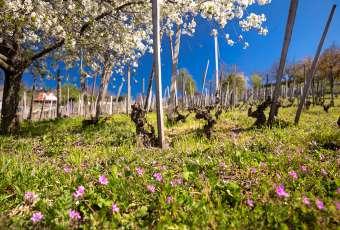
I later learned that in Japan it is a sacred ritual when a grandfather gifts the bonsai he planted decades earlier and then looked after and pruned for so many years to his grandchild. The tiny tree is the embodiment of the care, trust and love connecting generations. This is what my guest saw in my old vines and he was right. These kadarka stocks were planted, pruned and looked after by our ancestors.
Péter Vida likes to take visitors for a guided tour in the vineyards. “Once a Japanese wine merchant came to visit us. He tasted the wines, listened to the story of kadarka and then he asked me to take him to see the vineyards. When we arrived, he jumped out of the car, ran towards the vines, all the while slapping his forehead as if he had just made some great discovery. “Bonsai, bonsai!”, he shouted.
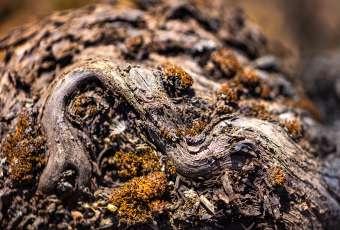
A kadarka vineyard planted in the 1920’s is something rare and it represents great value in itself. You have to bow deep or even kneel down when working with them as they are old, headtrained, bush vines. The label of our Kadarka shows a plant that is halfway between a bonsai and a vine stock. The intention was to express that even though they are small in size old vines are wiser than people.”

Geographical location:
Main soil:
Climate:
Area under vine:
Most popular varieties:
part of the Upper-Hungary wine region Eger is situated in Northeast Hungary rhyolite tuff
cold winters, moderately hot summers
6000 ha
olaszrizling, leányka, kékfrankos, kadarka
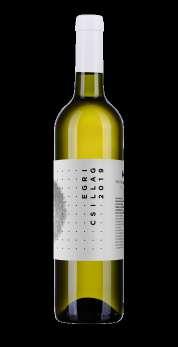
Eger DOC
There is not a single white variety that dominates the Eger wine region either in terms of area under vine or in volume. However whites are important with 45% of all plantations dedicated to one or another white variety. Blending represents a long-standing tradition in the wine region. So it was a no-brainer to arrive at the idea of the white blend, “egri csillag”. The entry level Tóth Ferenc Egri Csillag Classicus is made from varieties indigenous to the Carpathian Basin, it sees no oak during vinification and it’s a lithe, refreshing wine with intense fruit.
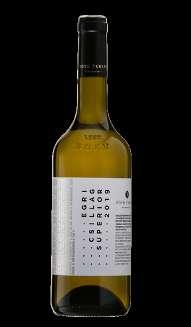
Eger DOC
Egri csillag has to contain at least four different white varieties, and at least half of the varieties have to be indigenous to the Carpathian Basin. There are three different categories, all of them dry: classicus, superior and grand superior. Tóth Ferenc Egri Csillag Superior is a concentrated white partially aged in oak that lends itself to tasting on its own but is also great as an accompaniment to properly selected dishes.
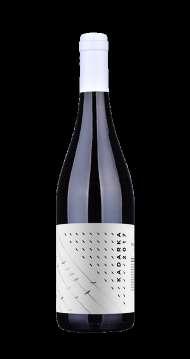
Eger DOC
Before the phylloxera blight almost 70% of the vines grown in Hungary were kadarka but then the variety almost completely disappeared. Today we are experiencing a revival in the variety’s popularity. Ferenc Tóth has been doing research with the various clones for years now and his efforts were honoured by the title “Hungary’s Kadarka Ambassador”. This Kadarka is aged in barrels for a brief period to retain its vibrant, red fruit and spicy character.
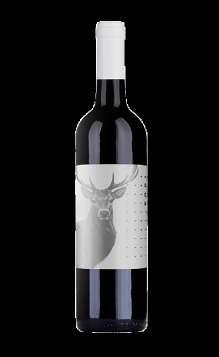
Eger DOC
Bikavér has always had a prominent role in Eger. Local winemakers agree that the best way to show the potential of the region is through blends. According to the regulations there are three levels of bikavér in Eger. For the introductory level, “Classicus” Bikavér at Tóth Ferenc Winery the base wines are aged separately in barrels and then blended to make for a full-bodied wine with ample, ripe fruit.

Eger DOC
Grapes for egri bikavér have to be grown within the boundaries of the Eger wine region. The blend’s prime constituent is a local variety, kékfrankos. The strict regulations also stipulate the proportions of the various varieties, methods of vinification and ageing. Tóth Ferenc Egri Bikavér Superior is made from the best lots of the constituent varieties. This is a rich and elegant blend with a long ageing potential.
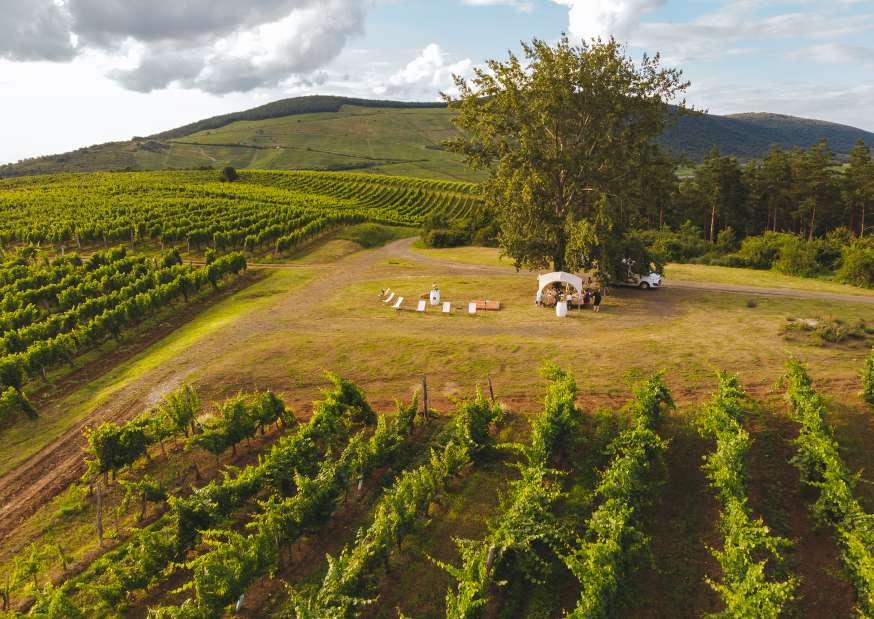
Established in:
Vineyards:
Production:
Web:
E-mail:
1983
Eger Wine District: 30 hectares
120.000 bottles/year
www.tothferencpinceszet.hu/en
export@tothferencpinceszet.hu
One of the oldest family owned wineries in the Eger wine district, Tóth Ferenc Winery was established in 1983 by ’Uncle Feri’. In recognition of his work, in 2018 he was elected “Viticulturist of the Year 2017 in Eger”. Several generations, young and old members of the family work together passionately to enhance the good reputation of the winery and the wines of Eger in general. In 2005 a new generation has joined the estate, the daughter and son-in-law of Ferenc Tóth. In the following years, besides many investments and developments, Katalin has gradually taken over the operative management of the winery. Today they produce top quality wines especially from two local varieties, Leányka and Kadarka. They also excel with the two iconic, traditional blends of the region, Egri Csillag and Egri Bikavér wines at three different quality levels.
Blending is no child’s play at our winery, the process may take several weeks. But it can’t be hurried, you must get the blending right.
Eger bikavér has a tradition going back to over a hundred years in our wine region. The red blend well-known in foreign markets has received a new companion in 2010 when Eger winemakers decided to create a new category, a white blend called ’egri csillag’. It was high time to establish such a category because conditions in Eger favour white varieties just as much as reds.
At the start of the blending process in our winery 0.5 l bottles are filled with samples from all our wines. When we say ’all our wines’ it means more than just the different varieties. Some varieties have more than one version due to the different vessels of elevage (steel tank or oak barrels). Finally, there are single vineyard wines which also add to the number of possible combinations.
Once we have tasted all the samples, there is always one lot which stands head and shoulders above the others. This lot which did particularly well in that vintage will play a key role in the blending. The next step is to make various combinations, trial blends. At this stage the base wines assume strategic roles. Some will be responsible for adding weight, others to provide zest or to add aromatic complexity.
These trial blends are tasted with members of the family and members of the staff and eventually we vote on the one we have found the best. Each of us will take home a sample from this blend to taste it again in the evening. Then we call each other back and forth to report on our findings. The assemblage of our egri csillag and egri bikavér wines is the most exciting task of the whole year.
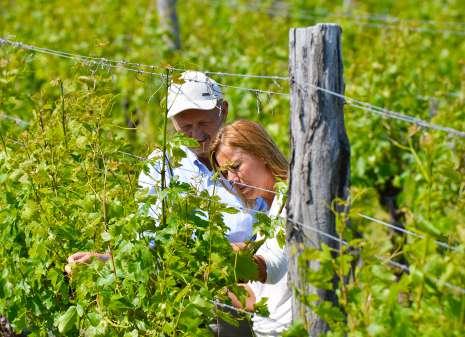
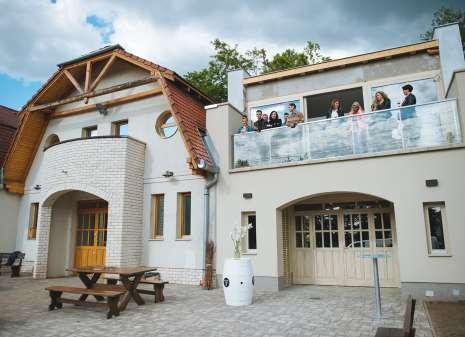
Síkhegy occupies a strategic location in the Eger wine district. When you look around you can see all the most important vineyards of the region. We can actually see our home as well from Síkhegy and when we step outside from our home in the morning the first thing we see on the horizon is Síkhegy.
Síkhegy has long been considered one of the prime locations for growing grapes in Eger. This is why Eger winemakers have always been keen on acquiring some holdings here. In our case acquisition was a painstaking process, the contiguous lot on the top of the hill we own today was stitched together from bits and pieces as small as eight rows. We grow kékfrankos, cabernet sauvignon, cabernet franc and merlot there.
There is a tree on top of the hill. If you stop by this tree and look around you’ll see grapes all around. And people whose lives revolve around farming grapes. There is always someone working in the nearby vineyards. To our mind this is the ideal place to experience perfect peace.
It was an age-old dream of ours to make this spot accessible to visitors so that we could taste the wines we produce together. We have found that it is a totally different experience to taste wines among vineyards regardless of the season. Be it the
season of pruning, bud break, veraison or harvest, standing right next to the vines it is much easier to explain and to grasp what it is like working in the vineyard and how much effort goes into producing the wine in your glass.


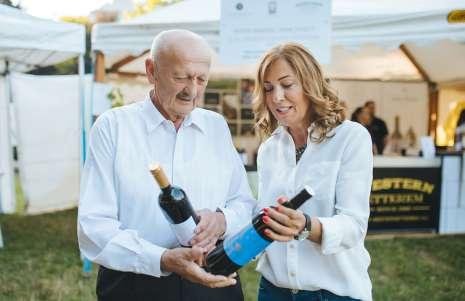
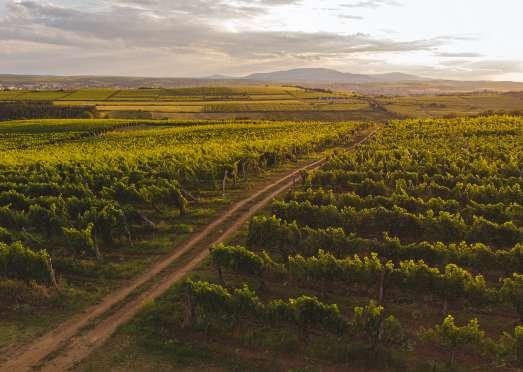
Today the family winery is run by Katalin Tóth. “I was born in Eger. This is where my family lives. My grandparents and great-grandparents have also worked in agriculture, growing grapes and vegetables in Eger on both sides of my family.
As a child the turning point in my life was when almost 40 years ago my Dad planted six hectares of grapes in the Áfrika-vineyard. From then on every afternoon and all school holidays were about tending the vines. All the work in the vineyards was done by us and I was not particularly happy about it.
So when I grew up I wanted a different way of life, studied finance and became the Managing Director of a bank in Eger. As it turned out, six hectares was just the right size for my parents: they could cope with the workload and the grapes yielded enough wine to provide a living. It was at the beginning of the new millennium that we were faced with the dilemma of what to do with our little holding. There seemed to be only two options for the winery: extension or slow decline.
This was when I decided to leave the bank and start working full-time at the winery. It was a momentous decision for the entire family. Especially for me. I remember what it was like in the first year when the only people I knew from the wine business were my parents. It was a particularly difficult and lonely year.
But as time passed by I got to know more and more people, my knowledge expanded and so did my responsibilities, I had to make more and more decisions. I learnt a lot from my Dad and his expertise is the cornerstone of my understanding of wine. He has laid the foundations on which I can build and extend it with my own experience. It is the two of us whose work makes our wines precious and unmistakably Egrian.”
Etyek-Buda Wine District
Mór Wine District
Neszmély Wine District
Pannonhalma Wine District
Sopron Wine District
Badacsony Wine District
Balatonboglár Wine District
Balaton Highlands Wine District
Balatonfüred-Csopak Wine District
Nagy-Somló Wine District
Zala Wine District
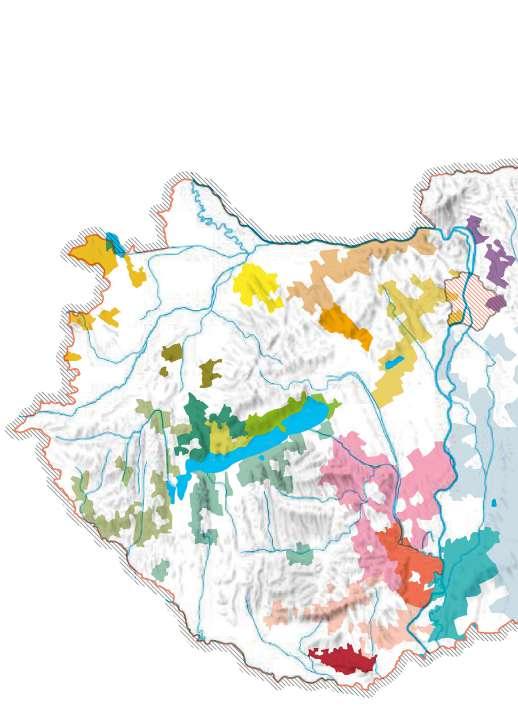
Tokaj Wine District
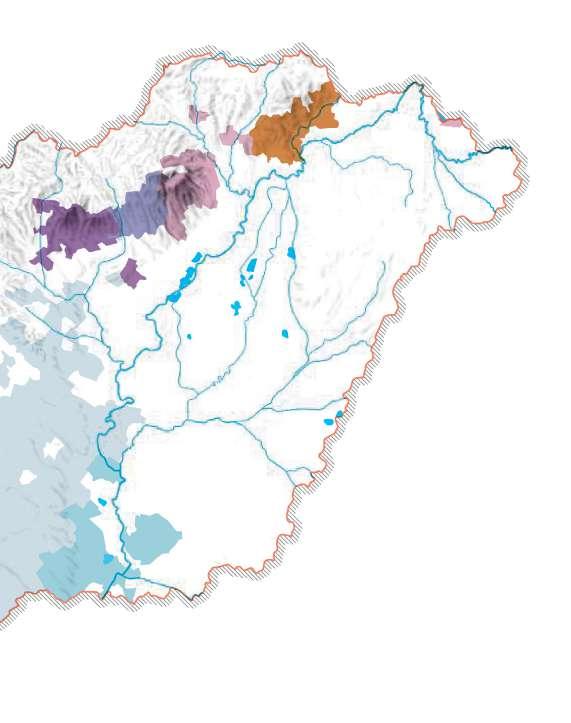
Bükk Wine District
Eger Wine District
Mátra Wine District
Csongárd Wine District
Hajós-Baja Wine District
Kunság Wine District
Pécs Wine District
Szekszárd Wine District
Tolna Wine District
Villány Wine District
@fwahungary
Wines of Hungary www.winesofhungary.hu
@winesofhungaryfacebook @wines.of.hungary
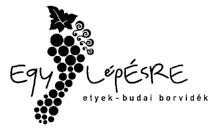
Etyek-Budai Borvidék Hegyközségi Tanácsa www.etyekbudaiborvidek.hu
Etyeki Kúria Winery
www.etyekikuria.com
2091 Etyek, Báthori utca 21. etyek@etyekikuria.com
@etyekikuria
Tóth Ferenc Winery
www.tothferencpinceszet.hu
3300 Eger, Kristályai út 40. export@tothferencpinceszet.hu
Wine in Moderation wineinmoderation.eu
Tokaj-Hétszőlő Organic Vineyards
www.tokajhetszolo.com
3910 Tokaj, Bajcsy-Zs. út 19-21, tokaj@hetszolo.hu
@tokajhetszolo
Homola – Paloznak
www.homolapinceszet.hu/en 8229 Paloznak, 0534 Vinceller u. sales@homolapinceszet.hu
@tothferencpinceszet @homolapinceszet
Vida Péter Szekszárd
www.vidaborbirtok.hu
7100 Szekszárd, Napfény utca 27/A info@vidaborbirtok.hu
@vidaborbirtok
Etyeki Kúria Winery, Tokaj-Hétszőlő Organic Vineyards, Tóth Ferenc Winery, Vida Péter Szekszárd, Korsós Viktor, Láng Nándor, Oláh Petra, Wines of Hungary - Personally

